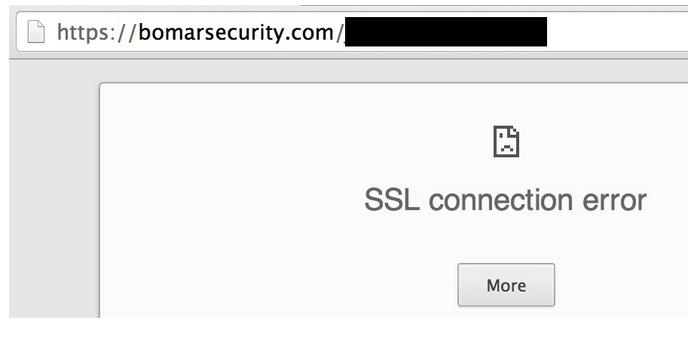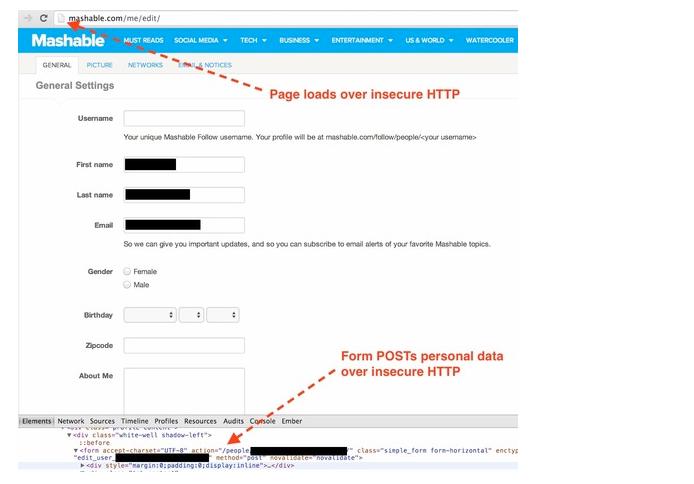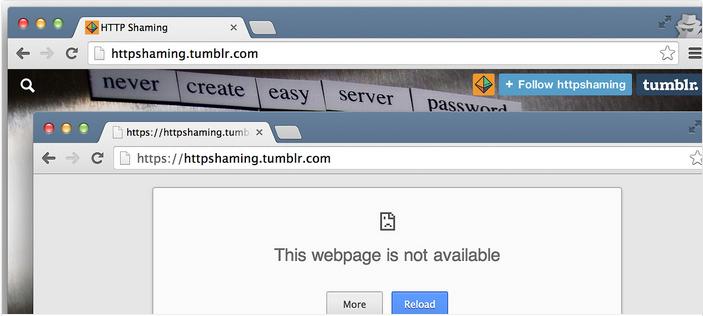| amazon — kindle |
The Amazon.com Kindle application before 4.5.0 for Android does not verify X.509 certificates from SSL servers, which allows man-in-the-middle attackers to spoof servers and obtain sensitive information via a crafted certificate. |
2014-08-30 |
5.8 |
CVE-2014-3908
JVNDB
JVN |
| apache — commons-httpclient |
http/conn/ssl/AbstractVerifier.java in Apache Commons HttpClient before 4.2.3 does not properly verify that the server hostname matches a domain name in the subject’s Common Name (CN) or subjectAltName field of the X.509 certificate, which allows man-in-the-middle attackers to spoof SSL servers via a certificate with a subject that specifies a common name in a field that is not the CN field. NOTE: this issue exists because of an incomplete fix for CVE-2012-5783. |
2014-09-04 |
4.3 |
CVE-2012-6153
CONFIRM
BID
CONFIRM
REDHAT |
| apache — poi |
The OPC SAX setup in Apache POI before 3.10.1 allows remote attackers to read arbitrary files via an OpenXML file containing an XML external entity declaration in conjunction with an entity reference, related to an XML External Entity (XXE) issue. |
2014-09-04 |
4.3 |
CVE-2014-3529
CONFIRM
SECUNIA
CONFIRM |
| apache — poi |
Apache POI before 3.10.1 and 3.11.x before 3.11-beta2 allows remote attackers to cause a denial of service (CPU consumption and crash) via a crafted OOXML file, aka an XML Entity Expansion (XEE) attack. |
2014-09-04 |
4.3 |
CVE-2014-3574
SECUNIA
CONFIRM |
| check_mk_project — check_mk |
Check_MK before 1.2.4p4 and 1.2.5 before 1.2.5i4 allows remote authenticated users to write check_mk config files (.mk files) to arbitrary locations via vectors related to row selections. |
2014-09-02 |
4.9 |
CVE-2014-5339
BUGTRAQ
MISC |
| cisco — cloud_portal |
Cisco Intelligent Automation for Cloud (aka Cisco Cloud Portal) 2008.3_SP9 and earlier does not properly consider whether a session is a problematic NULL session, which allows remote attackers to obtain sensitive information via crafted packets, related to an “iFrame vulnerability,” aka Bug ID CSCuh84801. |
2014-08-30 |
4.3 |
CVE-2014-3352 |
| codeaurora — android-msm |
app/aboot/aboot.c in the Little Kernel (LK) bootloader, as distributed with Qualcomm Innovation Center (QuIC) Android contributions for MSM devices and other products, allows attackers to overwrite signature-verification code via crafted boot-image load-destination header values that specify memory locations within bootloader memory. |
2014-08-31 |
6.6 |
CVE-2013-2598 |
| codeaurora — android-msm |
A certain Qualcomm Innovation Center (QuIC) patch to the NativeDaemonConnector class in services/java/com/android/server/NativeDaemonConnector.java in Code Aurora Forum (CAF) releases of Android 4.1.x through 4.3.x enables debug logging, which allows attackers to obtain sensitive disk-encryption passwords via a logcat call. |
2014-08-31 |
5.0 |
CVE-2013-2599 |
| exim — exim |
The dmarc_process function in dmarc.c in Exim before 4.82.1, when EXPERIMENTAL_DMARC is enabled, allows remote attackers to execute arbitrary code via the From header in an email, which is passed to the expand_string function. |
2014-09-04 |
6.8 |
CVE-2014-2957
CONFIRM |
| exim — exim |
expand.c in Exim before 4.83 expands mathematical comparisons twice, which allows local users to gain privileges and execute arbitrary commands via a crafted lookup value. |
2014-09-04 |
4.6 |
CVE-2014-2972
CONFIRM
FEDORA
FEDORA
CONFIRM |
| freedesktop — poppler |
DCTStream.cc in Poppler before 0.13.3 allows remote attackers to cause a denial of service (crash) via a crafted PDF file. |
2014-08-29 |
4.3 |
CVE-2010-5110
SUSE
CONFIRM
SECUNIA
MLIST |
| google — android_browser |
The Android Browser application 4.2.1 on Android allows remote attackers to bypass the Same Origin Policy via a crafted attribute containing a u0000 character, as demonstrated by an onclick=”window.open(‘u0000javascript: sequence. |
2014-09-02 |
5.8 |
CVE-2014-6041
MISC |
| hl7 — c-cda |
Cross-site scripting (XSS) vulnerability in CDA.xsl in HL7 C-CDA 1.1 and earlier allows remote attackers to inject arbitrary web script or HTML via a crafted reference element within a nonXMLBody element. |
2014-09-02 |
4.3 |
CVE-2014-3861
MISC |
| hl7 — c-cda |
CDA.xsl in HL7 C-CDA 1.1 and earlier allows remote attackers to discover potentially sensitive URLs via a crafted reference element that triggers creation of an IMG element with an arbitrary URL in its SRC attribute, leading to information disclosure in a Referer log. |
2014-09-02 |
4.3 |
CVE-2014-3862
MISC |
| hl7 — c-cda |
CDA.xsl in HL7 C-CDA 1.1 and earlier does not anticipate the possibility of invalid C-CDA documents with crafted XML attributes, which allows remote attackers to conduct XSS attacks via a document containing a table that is improperly handled during unrestricted xsl:copy operations. |
2014-09-02 |
4.3 |
CVE-2014-5452
MISC |
| ibm — cognos_tm1 |
The client in IBM Cognos TM1 9.5.2.3 before IF5, 10.1.1.2 before IF1, 10.2.0.2 before IF1, and 10.2.2.0 before IF1 stores obfuscated passwords in memory, which allows remote authenticated users to obtain sensitive cleartext information via an unspecified security tool. |
2014-09-04 |
4.0 |
CVE-2014-0863
XF |
| ibm — business_process_manager |
IBM Business Process Manager (BPM) 7.5.x through 8.5.5 and WebSphere Lombardi Edition 7.2.x allow remote authenticated users to bypass intended access restrictions and send requests to internal services via a callService URL. |
2014-09-04 |
4.0 |
CVE-2014-4758
XF
AIXAPAR |
| ibm — business_process_manager |
An unspecified Ajax service in the Content Management toolkit in IBM Business Process Manager (BPM) 8.5.x through 8.5.5 allows remote authenticated users to obtain sensitive information by performing a document-attachment search and then reading document properties in the search results. |
2014-09-04 |
4.0 |
CVE-2014-4759
XF |
| iii — encore_discovery_solution |
Open redirect vulnerability in Innovative Interfaces Encore Discovery Solution 4.3 allows remote attackers to redirect users to arbitrary web sites and conduct phishing attacks via a URL in an unspecified parameter. |
2014-08-29 |
5.8 |
CVE-2014-5127
BID
BUGTRAQ |
| iii — encore_discovery_solution |
Innovative Interfaces Encore Discovery Solution 4.3 places a session token in the URI, which might allow remote attackers to obtain sensitive information via unspecified vectors. |
2014-08-29 |
5.0 |
CVE-2014-5128
BID
BUGTRAQ |
| iii — sierra |
Cross-site scripting (XSS) vulnerability in Innovative Interfaces Sierra Library Services Platform 1.2_3 allows remote attackers to inject arbitrary web script or HTML via unspecified parameters. |
2014-09-02 |
4.3 |
CVE-2014-5136
BUGTRAQ |
| iii — sierra |
Innovative Interfaces Sierra Library Services Platform 1.2_3 provides different responses for login request depending on whether the user account exists, which allows remote attackers to enumerate account names via a series of login requests, possibly related to the Webpac Pro submodule. |
2014-09-02 |
5.0 |
CVE-2014-5137
BUGTRAQ |
| labanquepostale — labanquepostale |
The La Banque Postale application before 3.2.6 for Android does not prevent the launching of an activity by a component of another application, which allows attackers to obtain sensitive cached banking information via crafted intents, as demonstrated by the drozer framework. |
2014-09-02 |
4.3 |
CVE-2014-5076
MISC |
| linux — linux_kernel |
The kvm_iommu_map_pages function in virt/kvm/iommu.c in the Linux kernel through 3.16.1 miscalculates the number of pages during the handling of a mapping failure, which allows guest OS users to (1) cause a denial of service (host OS memory corruption) or possibly have unspecified other impact by triggering a large gfn value or (2) cause a denial of service (host OS memory consumption) by triggering a small gfn value that leads to permanently pinned pages. |
2014-08-31 |
4.3 |
CVE-2014-3601
CONFIRM |
| linux — linux_kernel |
Stack consumption vulnerability in the parse_rock_ridge_inode_internal function in fs/isofs/rock.c in the Linux kernel through 3.16.1 allows local users to cause a denial of service (uncontrolled recursion, and system crash or reboot) via a crafted iso9660 image with a CL entry referring to a directory entry that has a CL entry. |
2014-08-31 |
4.0 |
CVE-2014-5471
MISC
CONFIRM
MLIST |
| linux — linux_kernel |
The parse_rock_ridge_inode_internal function in fs/isofs/rock.c in the Linux kernel through 3.16.1 allows local users to cause a denial of service (unkillable mount process) via a crafted iso9660 image with a self-referential CL entry. |
2014-08-31 |
4.0 |
CVE-2014-5472
MISC
CONFIRM
MLIST |
| lua — lua |
Buffer overflow in the vararg functions in ldo.c in Lua 5.1 through 5.2.x before 5.2.3 allows context-dependent attackers to cause a denial of service (crash) via a small number of arguments to a function with a large number of fixed arguments. |
2014-09-04 |
5.0 |
CVE-2014-5461
BID
MLIST
DEBIAN
DEBIAN |
| manageengine — device_expert |
ReadUsersFromMasterServlet in ManageEngine DeviceExpert before 5.9 build 5981 allows remote attackers to obtain user account credentials via a direct request. |
2014-09-04 |
5.0 |
CVE-2014-5377
MISC
XF
BID
BUGTRAQ
EXPLOIT-DB
FULLDISC
FULLDISC
FULLDISC
MISC |
| mcafee — network_security_manager |
Cross-site request forgery (CSRF) vulnerability in the User Management module in McAfee Network Security Manager (NSM) before 6.1.15.39 7.1.5.x before 7.1.5.15, 7.1.15.x before 7.1.15.7, 7.5.x before 7.5.5.9, and 8.x before 8.1.7.3 allows remote attackers to hijack the authentication of users for requests that modify user accounts via unspecified vectors. |
2014-08-29 |
6.8 |
CVE-2014-2390
SECTRACK |
| mcafee — web_gateway |
The Accounts tab in the administrative user interface in McAfee Web Gateway (MWG) before 7.3.2.9 and 7.4.x before 7.4.2 allows remote authenticated users to obtain the hashed user passwords via unspecified vectors. |
2014-09-02 |
4.0 |
CVE-2014-6064
SECTRACK |
| mikejolley — download_monitor |
Cross-site scripting (XSS) vulnerability in the Download Monitor plugin before 3.3.5.9 for WordPress allows remote attackers to inject arbitrary web script or HTML via the dlsearch parameter to the default URI. |
2014-09-04 |
4.3 |
CVE-2012-4768
CONFIRM
SECUNIA
MISC
OSVDB
BUGTRAQ |
| mozilla — firefox |
Mozilla Firefox before 32.0, Firefox ESR 31.x before 31.1, and Thunderbird 31.x before 31.1 do not properly initialize memory for GIF rendering, which allows remote attackers to obtain sensitive information from process memory via crafted web script that interacts with a CANVAS element associated with a malformed GIF image. |
2014-09-03 |
4.3 |
CVE-2014-1564
CONFIRM |
| mozilla — firefox |
The mozilla::dom::AudioEventTimeline function in the Web Audio API implementation in Mozilla Firefox before 32.0, Firefox ESR 31.x before 31.1, and Thunderbird 31.x before 31.1 does not properly create audio timelines, which allows remote attackers to obtain sensitive information from process memory or cause a denial of service (out-of-bounds read) via crafted API calls. |
2014-09-03 |
5.0 |
CVE-2014-1565
CONFIRM |
| mozilla — firefox |
Mozilla Firefox before 31.1 on Android does not properly restrict copying of local files onto the SD card during processing of file: URLs, which allows attackers to obtain sensitive information from the Firefox profile directory via a crafted application. NOTE: this vulnerability exists because of an incomplete fix for CVE-2014-1515. |
2014-09-03 |
4.3 |
CVE-2014-1566
CONFIRM |
| phorum — phorum |
Cross-site scripting (XSS) vulnerability in the group moderation screen in the control center (control.php) in Phorum before 5.2.19 allows remote attackers to inject arbitrary web script or HTML via the group parameter. |
2014-09-04 |
4.3 |
CVE-2012-4234
MISC
XF
BID
SECUNIA
MISC
BUGTRAQ |
| plack_project — plack |
Plack::App::File in Plack before 1.0031 removes trailing slash characters from paths, which allows remote attackers to bypass the whitelist of generated files and obtain sensitive information via a crafted path, related to Plack::Middleware::Static. |
2014-09-04 |
5.0 |
CVE-2014-5269
OSVDB
MLIST
FEDORA
FEDORA
CONFIRM |
| qpw.famvanakkeren — quick_post_widget |
Multiple cross-site scripting (XSS) vulnerabilities in Quick Post Widget plugin 1.9.1 for WordPress allow remote attackers to inject arbitrary web script or HTML via the (1) Title, (2) Content, or (3) New category field to wordpress/ or (4) query string to wordpress/. |
2014-09-03 |
4.3 |
CVE-2012-4226
XF
BID
MISC
MISC
BUGTRAQ |
| sap — crystal_reports |
Stack-based buffer overflow in SAP Crystal Reports allows remote attackers to execute arbitrary code via a crafted data source string in an RPT file. |
2014-09-04 |
6.8 |
CVE-2014-5505
CONFIRM
MISC
CONFIRM |
| sap — crystal_reports |
Double free vulnerability in SAP Crystal Reports allows remote attackers to execute arbitrary code via crafted connection string record in an RPT file. |
2014-09-04 |
6.8 |
CVE-2014-5506
CONFIRM
MISC
CONFIRM |
| sap — netweaver |
Buffer overflow in disp+work.exe 7000.52.12.34966 and 7200.117.19.50294 in the Dispatcher in SAP NetWeaver 7.00 and 7.20 allows remote authenticated users to cause a denial of service or execute arbitrary code via unspecified vectors. |
2014-09-05 |
6.5 |
CVE-2014-6252
CONFIRM
SECUNIA
CONFIRM
MISC |
| sixapart — movable_type |
Cross-site scripting (XSS) vulnerability in Six Apart (formerly Six Apart KK) Movable Type (MT) Pro 5.13 allows remote attackers to inject arbitrary web script or HTML via the comment section. |
2014-08-29 |
4.3 |
CVE-2012-1503
XF
BID
EXPLOIT-DB
MISC
MISC
OSVDB |
| torrentflux — torrentflux |
TorrentFlux 2.4 allows remote authenticated users to obtain other users’ cookies via the cid parameter in an editCookies action to profile.php. |
2014-09-05 |
4.0 |
CVE-2014-6028
MISC
SECTRACK
MLIST
MLIST |
| torrentflux — torrentflux |
TorrentFlux 2.4 allows remote authenticated users to delete or modify other users’ cookies via the cid parameter in an editCookies action to profile.php. |
2014-09-05 |
4.9 |
CVE-2014-6029
MISC
SECTRACK
MLIST
MLIST |
| werdswords — download_shortcode |
Directory traversal vulnerability in force-download.php in the Download Shortcode plugin 0.2.3 and earlier for WordPress allows remote attackers to read arbitrary files via a .. (dot dot) in the file parameter. |
2014-09-03 |
5.0 |
CVE-2014-5465
BID
EXPLOIT-DB
CONFIRM |
| wordpress_mobile_pack_project — wordpress_mobile_pack |
The WordPress Mobile Pack plugin before 2.0.2 for WordPress does not properly restrict access to password protected posts, which allows remote attackers to obtain sensitive information via an exportarticles action to export/content.php. |
2014-08-29 |
5.0 |
CVE-2014-5337
MISC
BID
SECUNIA |
| xen — xen |
Xen 4.4.x, when running a 64-bit kernel on an ARM system, does not properly handle traps from the guest domain that use a different address width, which allows local guest users to cause a denial of service (host crash) via a crafted 32-bit process. |
2014-08-29 |
4.3 |
CVE-2014-5147 |
| xrms_crm_project — xrms_crm |
plugins/useradmin/fingeruser.php in XRMS CRM, possibly 1.99.2, allows remote authenticated users to execute arbitrary code via shell metacharacters in the username parameter. |
2014-09-02 |
6.5 |
CVE-2014-5521
MLIST
MLIST
EXPLOIT-DB
FULLDISC
MISC |
| zohocorp — manageengine_eventlog_analyzer |
Multiple cross-site scripting (XSS) vulnerabilities in event/index2.do in ManageEngine EventLog Analyzer before 9.0 build 9002 allow remote attackers to inject arbitrary web script or HTML via the (1) width, (2) height, (3) url, (4) helpP, (5) tab, (6) module, (7) completeData, (8) RBBNAME, (9) TC, (10) rtype, (11) eventCriteria, (12) q, (13) flushCache, or (14) product parameter. |
2014-08-29 |
4.3 |
CVE-2014-4930
BID
FULLDISC |
![]()



